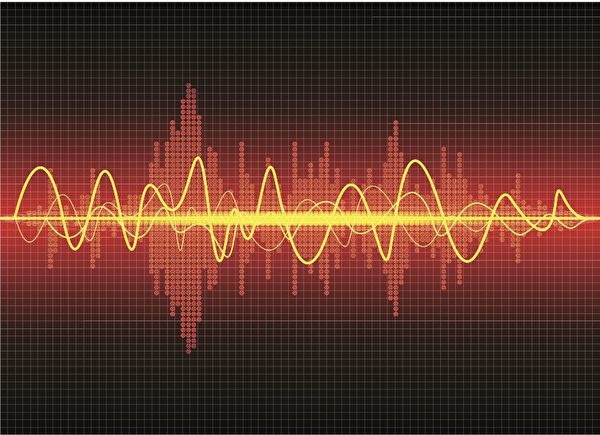Einstein’s special theory of relativity points out the cosmic speed limit - the speed of light in a vacuum for us. But sound travels through a medium, and what is the absolute maximum speed of sound in any medium?

It is not practical to measure the speed of sound in every material, but scientists have now managed to set an upper limit on the speed transmission according to the fundamental constants of the law of nature.
According to calculations, the maximum speed of sound in all media cannot exceed 36 kilometres per second, which is about twice the speed of sound in a diamond.
Both sound and light travel as waves but the ways are slightly different. Visible light is a form of electromagnetic radiation, the reason of so-called name is light waves consist of oscillating electric and magnetic fields. These fields form self-sustaining electromagnetic waves that can travel through a vacuum at a high speed of about 300,000 kilometres per second. Light slows down when it enters a medium such as water or the atmosphere.
Sound is a mechanical wave caused by vibration in a medium. As waves travel through a medium, molecules of the medium collide with each other and transfer energy.
So, the harder the medium is, the harder it is to compress, and the faster the sound travels. For example, sound travels faster in water than in air, which is why whales can communicate over great distances in the ocean.
In hard solids, such as diamonds, sound travels even faster. When seismic waves pass through the mantle, we get information about the earth's internal information. We can even get to know the inside of stars based on this theory.
Chris Pickard, the material scientist from University of Cambridge in the United Kingdom says, “Sound waves in solids have become very important in many fields,”. Seismologists use seismic waves to analyse the nature of seismic events and the structure of the internal earth. Materials scientists are also interested in sound waves in solids because it is related to the important elastic characteristics, which includes resistance to pressure.”
So, we want to figure out the speed limit of sound. A team of scientists from Queen Mary University of London, The University of Cambridge in the United Kingdom and the Russian Institute of High- pressure Physics found that the speed of sound depends on two fundamental constants.
One is the fine structure constant, which represents the strength of electromagnetic interactions between fundamentally charged particles. The other one is the proton to electron mass ratio, which is the proton mass divided by the electron mass.
“Fine-structure constants and fine-tuning values of the proton-electron mass ratio, as well as the balance between them, control nuclear reactions, such as proton decay and nuclear fusion in stars, leading to the formation of essential chemical elements; This balance provides a narrow “habitable zone” in space from which stars and planets, and even the molecular structure of life originate. We declare that a simple combination of the fine structure constant and the proton-electron mass ratio results in another dimensionless quantity that characterizes a key property of the condensed phase -- the velocity of wave propagation in solid and liquid, or the velocity of sound.”
To test their equation, the team experimentally measured the speed of sound travelling through a variety of elements, solid and liquid, and returned results which was consistent with the predictions.
Another specific prediction of the theory is that the speed of sound should decrease as the atomic mass of the element in the medium increases. Thus, the ultimate speed of sound should be the speed at which waves pass through a solid hydrogen crystal. The problem is, the solid hydrogen can only exist at extremely high pressure -- 100 gigapascals,1 gigapascals is 1 gpa,1000000MPa, that is 1 million Pa.
So it would be very difficult to verify it through direct experiment. Therefore, the team calculated it based on the properties of solid hydrogen. They found that the results were again match the theoretical expectations.
If the results of the equation keep consistent, it may prove to be a valuable tool for understanding not only specific materials, but also the entire universe.
Kostya Trachenko, a physicist at Queen Mary University of London, said: “We believe this research can help us discover and understand the limits of different properties associated with high-temperature superconductivity, such as viscosity and thermal conductivity; It also has potential for further applications in quark-gluon plasma and even black hole physics.
The study was published in the journal‘Science Advances’.

2021 Social Media Prediction: Twitter—Improving User Experience from Details (I)

Lazada: Record-Breaking Sales on Double Eleven

PS5 Astro’s Playroom Preview

IOS APP Store Data Report: Game Makers With an Annual Revenue of Less Than $1 Million Contribute to Only 2% of the Total Revenue